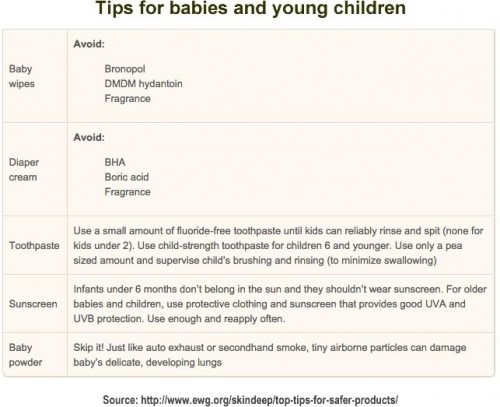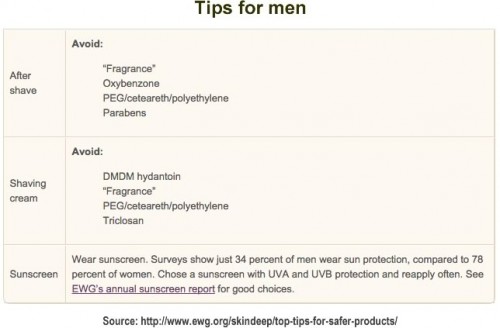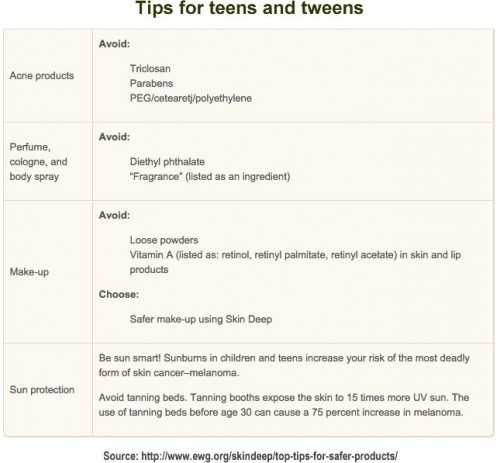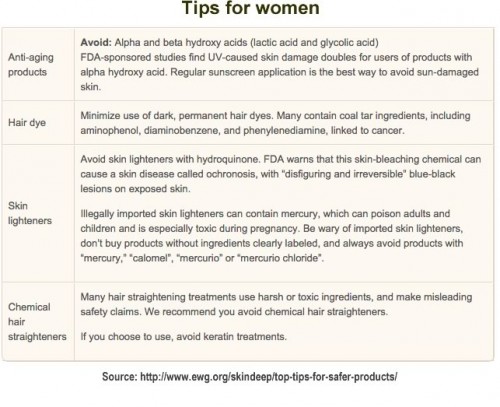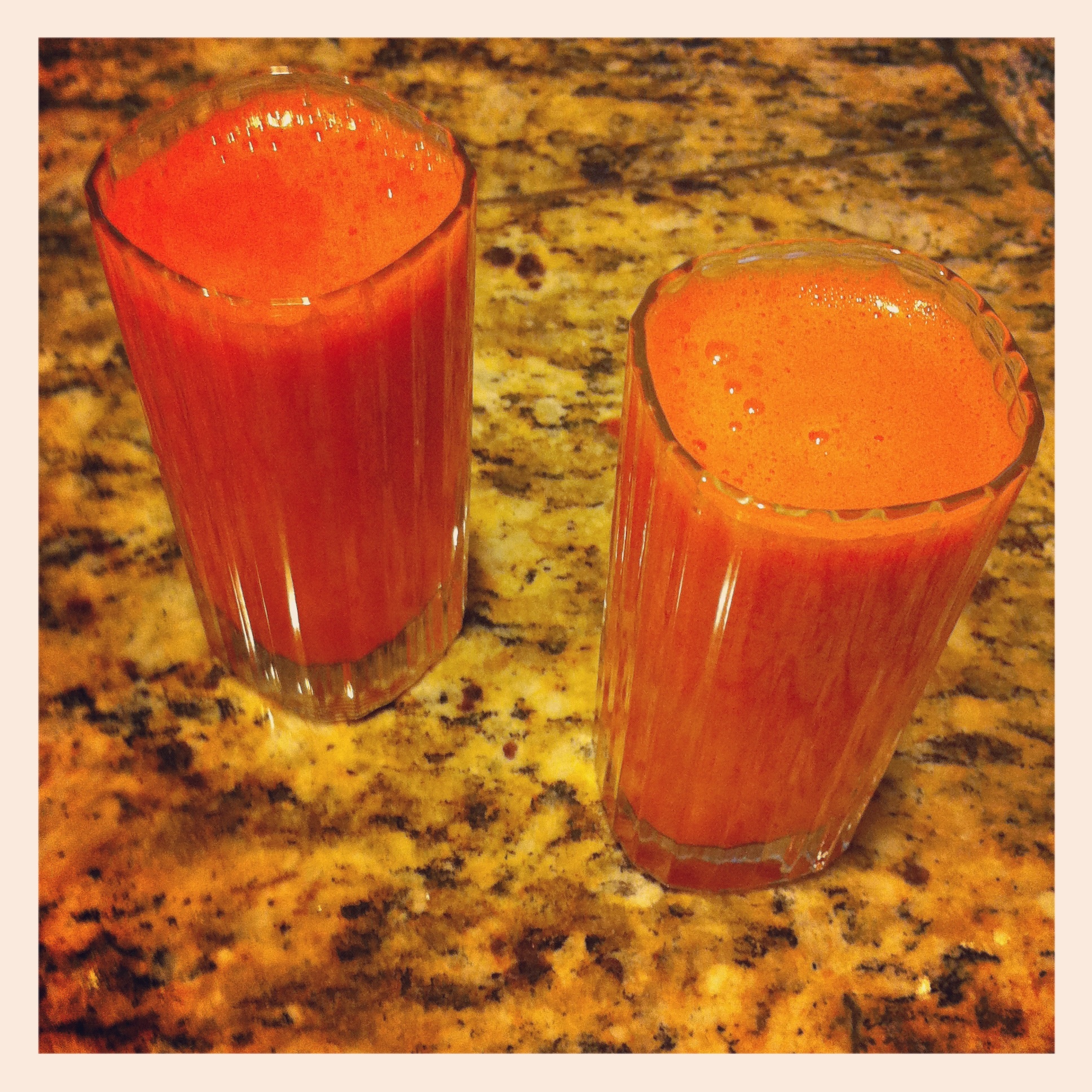How To Feed & Protect Your Skin
How To Feed & Protect Your Skin
As I wrote in last week’s article, How To Find Yourself By Doing What You Love, I was a wreck in my earlier years and my skin reflected it: the skin on my abdomen looked mottled and I had an incessant allergic-looking rash on my arms. It wasn’t noticeable to others because it was mild, but I knew it was there. Doctors that I visited prescribed creams & ointments, which did nothing to relieve my skin condition.
I also started having issues with dry & brittle hair. It was a mess! I began to read everything I could about skin & skin care products. The more I learned, the less I trusted the products that were advertised as “good for your hair & skin” and the more I understood that the condition of my skin was a perfect mirror for the dis-ease in my body. For example, poor thyroid function can cause dry & brittle skin and nails.
Here are some things that I have learned:
Natural Beauty Shines Through Your Skin
The skin is a major organ, as is the heart, the kidneys, and the lungs. You can nourish your skin with a healthy lifestyle and some natural remedies. It’s important to know what products to use and what to consume as well as what to stay away from so you can pamper your skin from the inside out.
What You Eat Builds Your Skin
 Your food makes up your tissues & cells. Water, essential fatty acids, antioxidants, and super foods offer superpower nutrients for your skin. Yes, chocolate is on the list.
Your food makes up your tissues & cells. Water, essential fatty acids, antioxidants, and super foods offer superpower nutrients for your skin. Yes, chocolate is on the list.
Use Skin Products The Are Good For You
Did you know that topical application of magnesium gel, for example, is an amazing way to add magnesium to our body without the normal side effects of oral magnesium intake? What you apply to your skin is absorbed into your blood stream. I use a variety of oils, such as: coconut, almond, sesame, and jojoba oils, as well as a variety of essential oils on my skin. Sunscreen is an important product to many of us. I highly recommend the Environmental Working Group’s guide on sunscreens (http://www.ewg.org/sunscreens).
Improve Your Lifestyle Habits
How do you look after a poor night’s sleep? That’s right! Sleep Matters!!! The quality of your sleep, as well as the quantity of sleep that you get has an impact on your entire body!
I was looking at some pictures that we took during our trip to Florida last December and I was unhappy about how I looked in the pictures. Although we had an amazing trip, I was conflicted and anxious about my Father’s health and associated issues, so I was not totally relaxed. Relaxation is important. When one is stressed, it shows. Getting adequate relaxation and exercise every day will help you shine. (Don’t forget to cleanse your skin after intense workouts to prevent clogged pores.)
Your Skin Needs a Good Brushing
Many years ago, I was introduced to the concept of Dry Skin Brushing by my dear teacher and mentor, Dr. Bruce Berkowsky. According to Dr. Berkowsky, “Vital Chi Skin-Brushing can sustain or re-establish the skin’s functional integrity and youthful glow”.
“Variations of skin-brushing have been practices for thousands of years. For many centuries, the Japanese employed vigorous skin-brushing with loofa sponges as a prelude to their traditional hot bath. Prior to bathing (following a hard training session or physical competition) ancient Greek athletes used strigiles: specialized spoon-like skin scrapers to remove the grime of exertion and encourage circulation. Among Cherokee Indians, skin-brushing with dried corn cobs to enhance durability was once a traditional practice. The Comanche Indians scrubbed their skin using sand from the Texas river bottoms; the Texas Rangers followed their example.” – Dr. Bruce Berkowsky, Natural Health Science Vital Chi Skin-Brushing System
If You Wouldn’t Eat It, Don’t Put It On Your Skin
Just like what you eat affects your skin’s health, what you put on your skin affects your health. Over 10,500 unique chemicals are used as ingredients in personal care products and NO PREMARKET SAFETY TESTING IS REQUIRED.

The first step to using products that nourish your skin is to read the ingredients on the labels and choose products that contain nourishing ingredients and do not contain toxic chemicals. Here are some common ingredients found in personal care products and cosmetics that are not safe to use:
Phthalates – Phthalates are industrial chemicals that are used as ingredients in both plastics and skincare products. Research studies have linked phthalates to reduced fertility and have been found to block the action of key hormones, resulting in inhibited sexual development. Babies are more susceptible to the effects of these toxins. Baby products containing phthalates are widely used. Recent research at the University of Washington found phthalate breakdown products in the urine of babies that were in the study (81% of the babies studied showed 7 or more phthalates).
Parabens – Parabens are preservatives (to prevent fungal and bacterial growth in the products) that mimic estrogen once absorbed by the body. One study found parabens in breast tumors. They are widely used in cosmetics. It is believed that all parabens can be found in all American bodies. According to the European Commission’s Scientific Committee on Consumer Products, some parabens are endocrine disruptors which can cause reproductive and developmental disorders.
1,4-dioxane (PEGs/Ceteareth/Polyethylene compounds) – These toxins are created by an inexpensive process that is used commercially to make emulsifiers, humectants, and foaming agents. These toxins are considered carcinogenic and potentially neurotoxic. A study commissioned by the Organic Consumers Association reveled that these toxins have even made their way into “natural” products. (Carcinogenic 1,4-Dioxane Found in Leading “Organic” Brand Personal Care Products)
Isothiazolinones – These are compounds listed as Methylisothiazolinone, methylchloroisothiazolinone, benzisothiazolinone (look for ingredients listing “chloro” or “methyl” on the label). These compounds are used as preservatives in hair dye, shampoo, shaving cream, body wash, and other products and are among the most common irritants, sensitizers, and allergens. Lab studies suggest that these compounds may be neurotoxic.
Triclosan & Triclocarban – These little babies are found in soap, toothpastes, shaving creams, mouth wash, and products labeled as “germ-resistant” (including toys, garbage bags, and even kitchen utensils. When you see soaps & liquids labeled “antibacterial” or “anti-microbial”, RUN. These are not only toxic to aquatic environments, they are toxic to humans! Triclosan disrupts thyroid function AND reproductive hormones. The best way to stay clean is to USE SOAP AND WATER! Overuse of antimicrobials may promote the development of resistance to antibiotics in the future. Did you know that when combined with chlorinated water, triclosan can form chloroform gas? As it degrades, it can form highly toxic compounds like dioxin. (Note: it’s important to note that some chemicals, on their own, react differently than the same chemical reacts in combination with other chemicals &/or environmental states.)
Talc – Even though talc is a mineral, when it is used in talcum powder and cosmetics, it can pose a hazard. Research on this issue goes back to at least 1971, when a study found that 75% of ovarian tumors studied contained talc particles. When the particles are inhaled, it could cause respiratory distress.
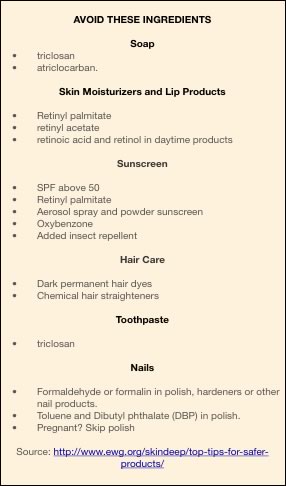 Other ingredients that are NOT SAFE to use in body products are:
Other ingredients that are NOT SAFE to use in body products are:
- BHA
- Boric Acid and Sodium Borate
- Coal tar hair dyes and other coal tar ingredients (including Aminophenol, Diaminobenzene, Phenylenediamine)
- Formaldehyde
- Formaldehyde Releasers – Bronopol, DMDM hydantoin, Diazolidinyl urea, Imidzaolidinyl urea and Quaternium-15
- Fragrance
- Hydroquinone
- Lead
- Nanoparticles
- Oxybenzone
- Parabens (specifically Propyl-, Isopropyl-, Butyl-, and Isobutyl- parabens)
- Petroleum distillates
- Resorcinol
- Toluene
- Vitamin A compounds (retinyl palmitate, retinyl acetate, retinol)
- Animal Based Ingredients
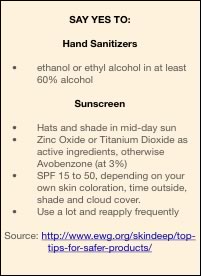 A wonderful resource available to consumers is the Environmental Working Group (EWG). I trust them because they are nonprofit and nonpartisan. Their sole mission is to protect consumers. You can find out more about toxic ingredients at the EWG website and you can use their app (http://www.ewg.org/skindeep/app/) to check ingredients while shopping.
A wonderful resource available to consumers is the Environmental Working Group (EWG). I trust them because they are nonprofit and nonpartisan. Their sole mission is to protect consumers. You can find out more about toxic ingredients at the EWG website and you can use their app (http://www.ewg.org/skindeep/app/) to check ingredients while shopping.
In conclusion, here are my recommendations:
Ten Steps To Healthy Skin:
- Stay Hydrated
- Consume Essential Fatty Acids
- Eat a diet that is rich in Antioxidants
- Add Super Foods to your meals
- Sleep
- Relax
- Exercise
- Brush Your Skin
- Use health promoting personal care products and cosmetics.
- Protect Your Skin by avoiding toxins in personal care products, cosmetics, cleaning agents, and the environment.
References
Healthy Skin Guide, Institute for Integrative Nutrition
http://www.naturalnews.com/025449_oil_products_skin.html
http://www.ewg.org/research/dirty-dozen-list-endocrine-disruptors
http://www.ewg.org/skindeep/2011/04/12/why-this-matters/
https://www.organicconsumers.org/old_articles/bodycare/DioxaneRelease08.php


